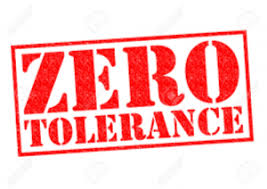GoodReads meta-data is 248 pages, rated 3.96 by 8432 litizens.
Verdict: Nada, nil, zilch, zip, nada, goose egg,….

This is a book about nothing and how important it is. Get that, and get it straight! Lear was right about nothing. Something times nothing is nothing. See? Yet nothing is always with us.
Babylonians with their sixty-based number system counted with abaci and started to use a space holder(s) to distinguish 1 on the first line from 10 on the second from 100 on the third, etc. They used slashes (/) to indicate the next line so 1 is 1, 1/ is 10, 1// is 100/,etc. Thus, like the numbers, zero came from the East to the West, and some of that passage was vexed.
Arabic numbers, derived from India, combined with zero (0) are much more efficient and effective than Roman numerals. Ever tried multiplying Roman numerals? Long division? Even writing them down shows that: Arabic 678 is Roman DCLXXVIII. And because there are fewer characters the margin of error in transcription is reduced. Plus the Arabic numbers are more distinctive one from another than the numerals with fewer inscription errors.
But nothing, zero, has metaphysical and mystical connotations that disturbed many. The Pythagoreans regarded it as a sign of the beast or hit-and-run and tried to keep it locked up. To some zero represented both nothing and everything. Both ends of that continuum were threatening. If there was nothing, where was it? Could nothing be anywhere?
On the other hand, it represent infinity, everything, say in Zeno’s paradox about going half-way to a goal ad infinitum and never getting there. Once infinity is considered, well, there is a lot of that to think about and our place in it must be pretty small.
When we are born are we one-year old? No when were are born we are zero-years old and twelve months later we are one year old. Everyone, even Republicans, well, maybe, knows that. But…., what about the calendar? There was no year zero there: 1 BC and 1 AD are adjacent with no intervening zero, which is one of the many reasons why the calendars of different civilisations vary as they do.
Zero became a number in India. When 2, a number, is subtracted from 2, a number, the result is 0 which, being the product of two numbers zero must itself be a number. Indian mathematicians accepted this logical result sooner and more easily than those to the West who resisted this obvious conclusion with some Olympian mathletics for nearly two millennia.
When zero (0) was a placeholder as in the Babylonian system it was put to the right of the numbers 1, 2, 3, ….9, and 0. But when it was promoted to a number it becomes the base 0, 1, 2, 3, …9. Ah, but that is counterintuitive. We do not count apples starting with 0 and then 1, and 2. We have three apples but only count up to 2 if we do, and we don’t (do that). So it went back to the right side of the sequence where it is on keyboards today. Although in England and Australia the ground floor of a building is in effect zero (0) and the second level is the first floor. Go figure. I still stumble over this fact.
The Indians were so phlegmatic that they also accepted negative numbers. When 3 is subtracted from 2 the result is -1. This conclusion was resisted to the last ditch in the West even to René Descartes’s day and age. In his determination to resist the negative, Descartes denigrated such numbers, e.g., the square root of negative number, as imaginary. See the Wikipedia entry for more mist and fog on the topic.

What a change since then. Nowadays everyone brags about Zero Tolerance.
The vanishing point in art also gets a look in. (Get it?) Leonardo was just one artist who saw mathematics in painting perspective. So does the elliptical orbit of planets from Johannas Kepler. Wide ranging indeed.
Then along came set theory, thermodynamics, string theory, a Cepheid variable, the Kelvin scale, the Casimir effect, cosmic Doppler shift, Mack the Knife, the Golden Ratio, and even rational numbers. For nothing zero has stirred up a lot somethings. Even the Black Hole comes into the equation. Is nothing sacred? Zero is everywhere and everything!
The book considers everyday examples like the Year Zero above, but also abstruse mathematics (e.g., projective geometry) , and even more abstruse metaphysics (infinity, as above) that I found it tough going, but, being tough, I kept going.

All in all, the book is Much Ado about Nothing. (Yuk, yuk.) But surely Jean-Paul gets the last words with his Being and Nothingness. For the the fraternity brothers, let me explain: zero is something, so it has being; zero is nothing, so it has nothingness. Sartre could have called his book Zero and been done with it. (Maybe he feared a shelver would get it mixed up with Zorro.)
But wait there is more, the book ends with an appendix in which it is proven that Winston Churchill was a carrot. See for yourself…., if you dare.
In the Temple of the Muses (1992) of John Robert Maddox’s diverting SPQR series the protagonist Decius encountered an Egyptian mathematician, a woman, who is onto zero and spends all of her time, according to the jaded Decius, talking about nothing when there is much else they could do together that would be something.

